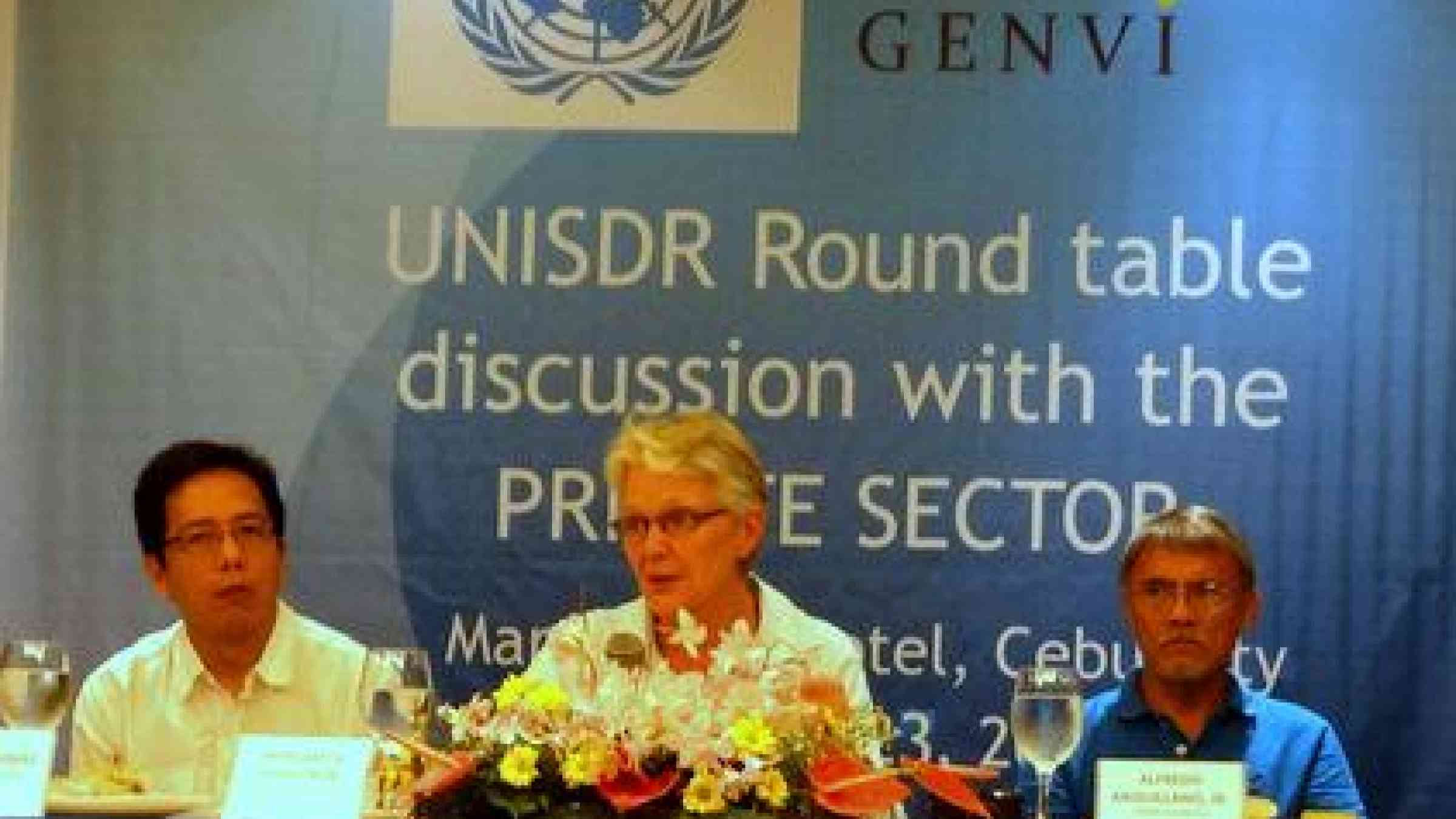DRR takes centre stage of typhoon recovery

CEBU, 26 November 2013 – Disaster risk reduction is emerging as central to the Philippines’ recovery and reconstruction plans in the wake of the devastating Typhoon Haiyan (known locally as Yolanda).
One of several leaders supporting increased investment in resilient structures is Mayor Ian Christopher Escario of Bantayan municipality, who oversaw a mass evacuation that limited the number of deaths to 15 people out of 90,000 in the face of the typhoon.
“We were able to evacuate 30,000 people a couple of days before using sirens and radio messages. People were informed but nobody could foresee the violence of the storm surge,” Mayor Escario said.
“Now we need to invest more in resilient infrastructures as all the roofs of the buildings have been blown away. Economic losses are huge and we are still assessing the damages and will take the necessary lessons of what happened.”
Philippines President Benigno Aquino III has declared certain coastlines as ‘no-build zones’ as reconstruction efforts begin. He directed the Department of Environment and Natural Resources to draw up a comprehensive programme of protection against storm surges, flooding, and landslides.
The Department has also been requested to identify areas, with the help of geo-hazard mapping, in typhoon-ravaged Leyte Island that are deemed unsafe as potential relocation sites. Mangroves, which will take up to seven years to grow, will be replanted in several areas to act as a natural buffer against storm surges.
The longer term vision for a more resilient Philippines was the key theme of a group of mayors from Bantayan Island who met the Chief of the UN Office for Disaster Risk Reduction (UNISDR), Ms Margareta Wahlström, during her visit to the Philippines.
The mayors identified the need for more resilient infrastructure, in particular schools, which are also used as evacuation centers during disasters. They also added that houses should be built further from the coast and with stronger materials and that people should be made more aware of how they can protect themselves against disasters.
The Governor of Cebu, Hilario Davide III, who briefed Ms Wahlström at the beginning of her visit, announced the launch of an inclusive taskforce, involving mayors and the private sector, to take an active part in recovery efforts and strengthen future resilience.
Ms Wahlström challenged the mayors and the private sector to be a model of public-private partnership in their efforts to rebuild shattered communities in the wake of Typhoon Haiyan.
“You have an opportunity to rebuild better and differently after typhoon Yolanda hit your municipalities,” Ms Wahlström told representatives from various business chambers, universities and the Metro Cebu Development and Coordinating Board at a forum organized by Genvi Development Corporation.
“It is important that you all rebuild together in a way that your communities will be more resilient in the future, almost as if, another typhoon was going to hit you again tomorrow, as it will.
“Could there be an alliance of mayors and the private sector in Cebu to ensure that it has resilience? We cannot wait four months to do this, because it would be forgotten by then,” said Ms Wahlström, who surveyed the typhoon damage in northern Cebu.
Typhoon Haiyan, which struck on November 8, killed more than 5,000 people, mostly in the island of Leyte, displaced 4.29 million people and destroyed more than 552,000 houses. Another 500,000 houses were damaged.
Ms Wahlström said that UNISDR is keen to work with the private sector. “We have everything in place, the good will of mayors, of the governor of Cebu and the private sector to rebuild a safer Cebu. Let's show it to the world as an example to follow,” Ms Wahlström said.
The president of the Cebu Chamber of Commerce and Industry, Lito Maderazo, agreed that Cebu could provide a shining example of how to collaborate but local actors needed to have the capacity to play their part.